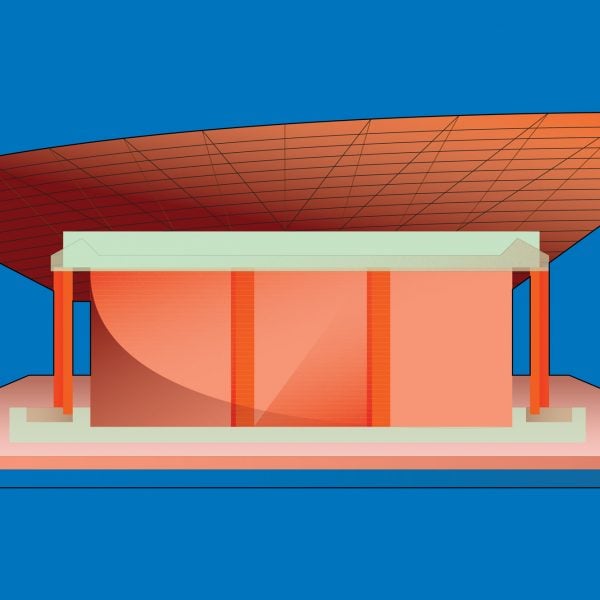Next up in our 21st-Century Architecture: 25 Years 25 Buildings series, we spotlight architect Diébédo Francis Kéré’s Gando Primary School in Burkina Faso – the “perfect learning environment”.
Kéré’s first project, the primary school was constructed from local materials and aimed to incorporate local climate strategies.
The architect started his career strong, with the Aga Khan Award for Architecture describing the building as the “perfect learning environment”.
It combined local and modern architecture with a bottom-up approach capable of promoting social and environmental justice that would set the tone for his later work, which ultimately led to him winning the Pritzker Architecture Prize in 2022.
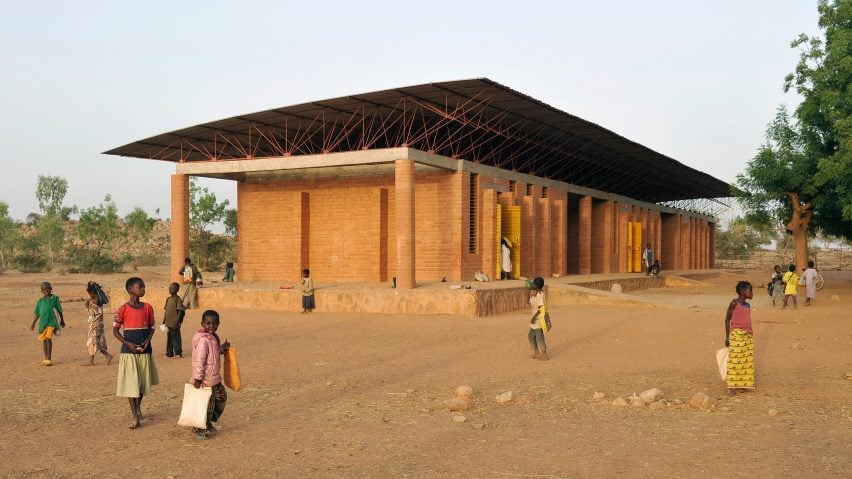
While still a student at the Technical University in Berlin, Kéré returned to his hometown in Gando, Burkina Faso, with a mission to create a well-lit and ventilated school to replace one that had fallen into disrepair.
Arranged across three rectilinear volumes, the 520-square-metre school features a dry-stacked brick ceiling and an overhanging metal roof raised by a network of steel bars.
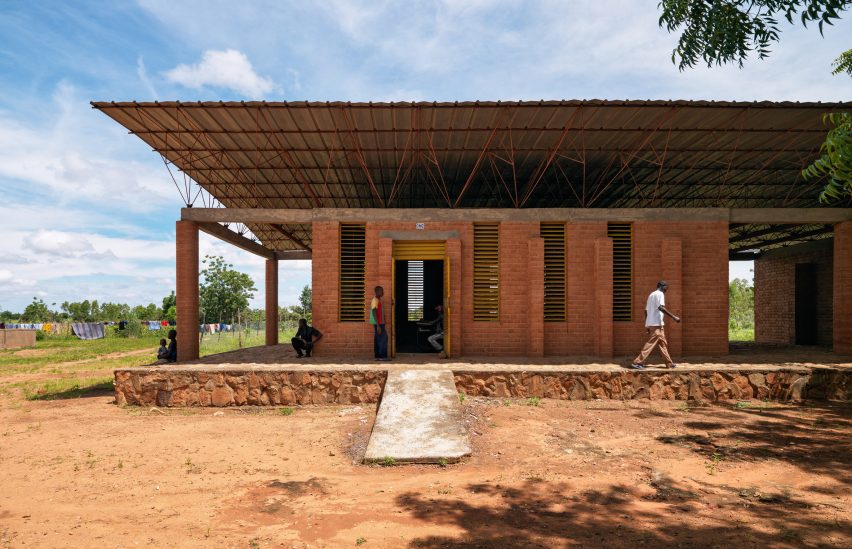
Windows adorned with colourful shutters decorate the school’s exterior and draw cool air into the space. Simultaneously, hot air is released through the building’s clay roof to passively cool the classrooms and eliminate the need for air conditioning.
Working to a set of parameters set by cost, climate, resource availability and construction possibilities, Kéré’s approach is somewhat stripped-back – comprising only the essential qualities.
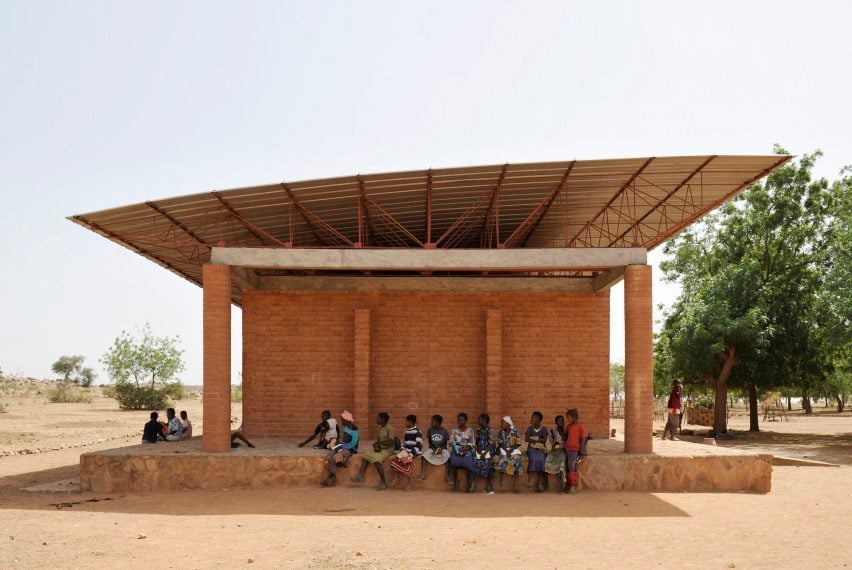
Determined to deliver a project that utilised the area’s abundant clay resources, Kéré advocated for the use of locally-made clay bricks – an approach that was first met with “big rejection” from the local community.
Clay was initially considered by the community to be a primitive material unable to withstand the region’s heavy rainfall, while also requiring regular maintenance.
He has continuously pursued this task in ways at once highly respectful of place and tradition and yet transformational in what can be offered Pritzker Architecture Prize jury
Kéré’s innovative use of cement to create strong earth blocks that require little to no maintenance, however, quickly gained respect from locals for its resilience. The social influence of the project would see it become a precedent for other contemporary earthen buildings across the region.
Following its completion in 2001, the Gando Primary School gained recognition for its revolutionary, sustainable approach. In 2004 the school won a prestigious Aga Khan Award for Architecture for its “utterly appropriate” design – launching Kéré’s career just as he completed his degree.
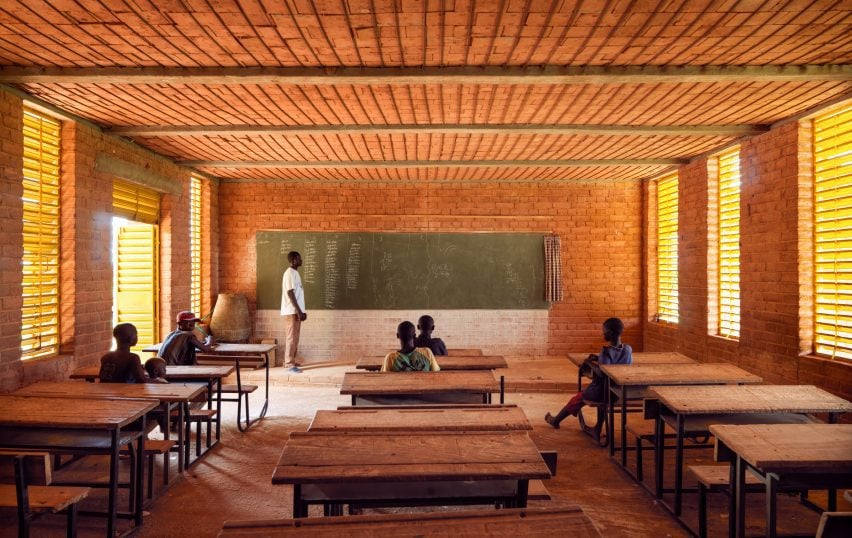
The Gando Primary School set a framework for Kéré’s later works, including the Dano Secondary School completed in 2007 and the Gando Primary School Extension. This extension completed in 2008, following an overwhelming increase in enrolment.
In keeping with the original school building, the similarly rectilinear extension provides four additional classrooms connected by a sunken seating area.
Built from the same materials as the original building, it uses similar construction techniques, although with the addition of updated elements including a vaulted roof that improves ventilation and spatial quality within the space.
Later projects by the architect include the Centre for Earth Architecture completed in Mopti, Mali, in 2010, which was designed to showcase clay construction techniques, and the Léo Surgical Clinic and Health Center completed in Burkina Faso in 2014, which comprises 10 modular medical units built from raw clay and sheltered by overhanging roofs.
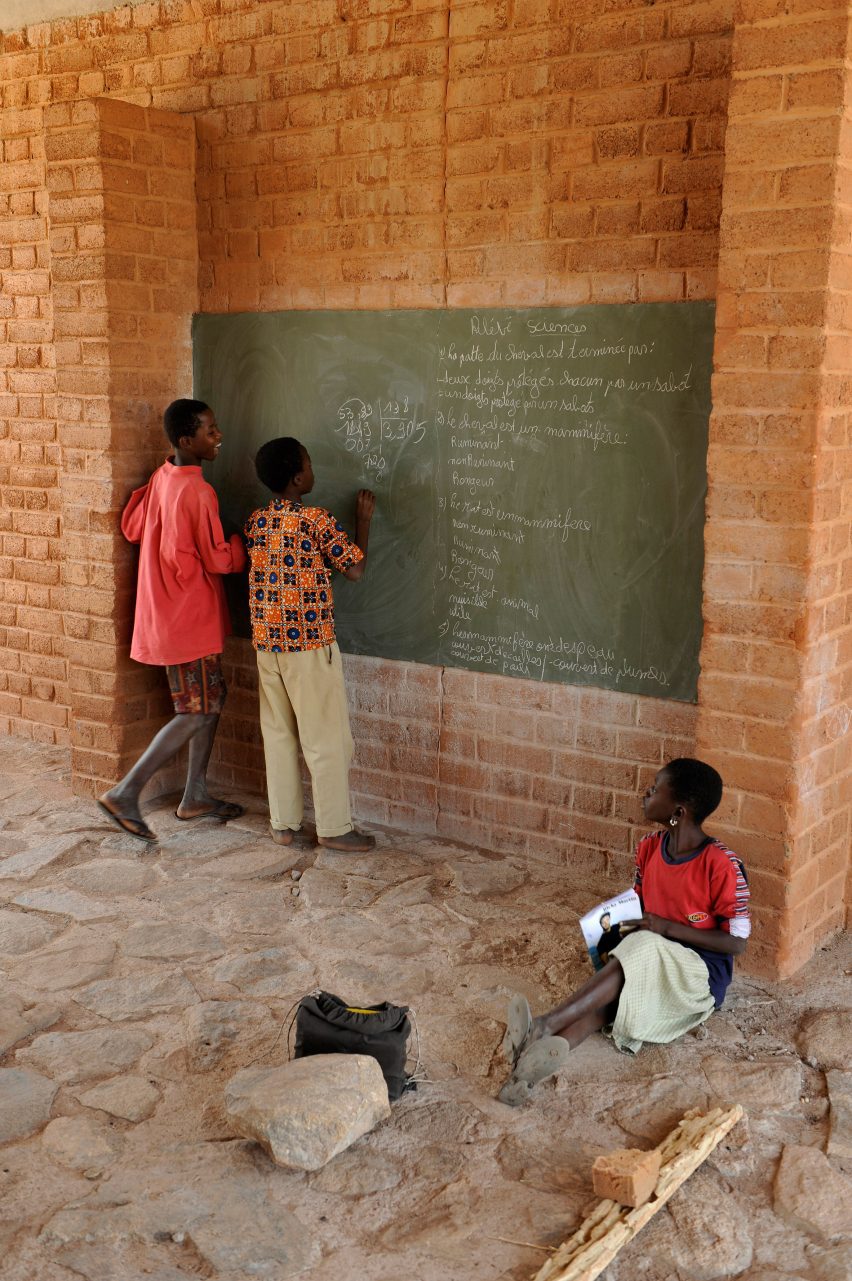
Upon being awarded the Pritzker Architecture Prize in 2022, Kéré was praised by the jurors for his ability “to integrate the traditional with the contemporary” and “remind us of the necessary struggle to change unsustainable patterns of production and consumption”.
“He has continuously pursued this task in ways at once highly respectful of place and tradition and yet transformational in what can be offered, as in the primary school in Gando which served as an example to so many even beyond the borders of Burkina Faso,” the jurors said.
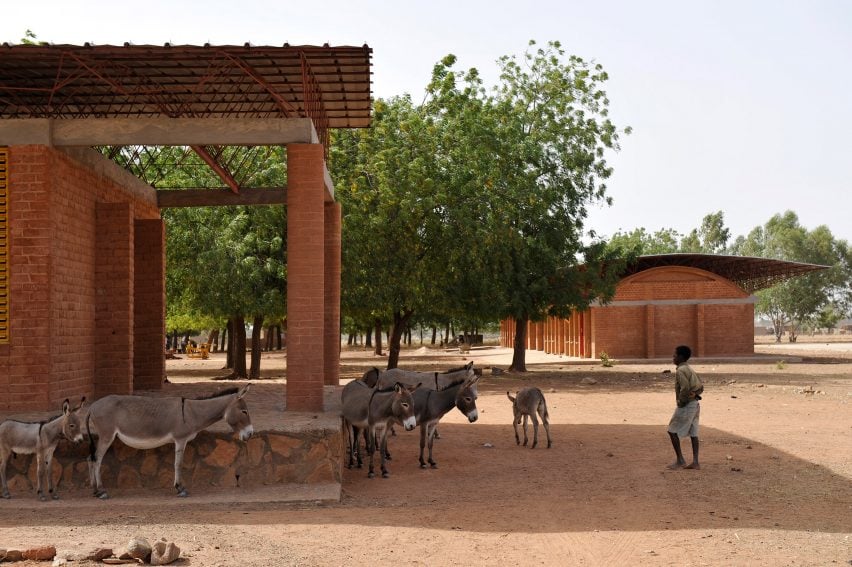
“Francis Kéré’s entire body of work shows us the power of materiality rooted in place,” the jurors said. “His buildings, for and with communities, are directly of those communities – in their making, their materials, their programs and their unique characters.”
“They are tied to the ground on which they sit and to the people who sit within them,” they added. “They have presence without pretence and an impact shaped by grace”.
Over 20 years since its completion, Kéré’s Gando Primary School still stands as an exemplar of sustainable architecture – claiming its place as one of the century’s most significant buildings thus far.
Did we get it right? Was Diébédo Francis Kéré’s Gando Primary School the most significant building completed in 2001? Let us know in the comments. We will be running a poll once all 25 buildings are revealed to determine the most significant building of the 21st century so far.
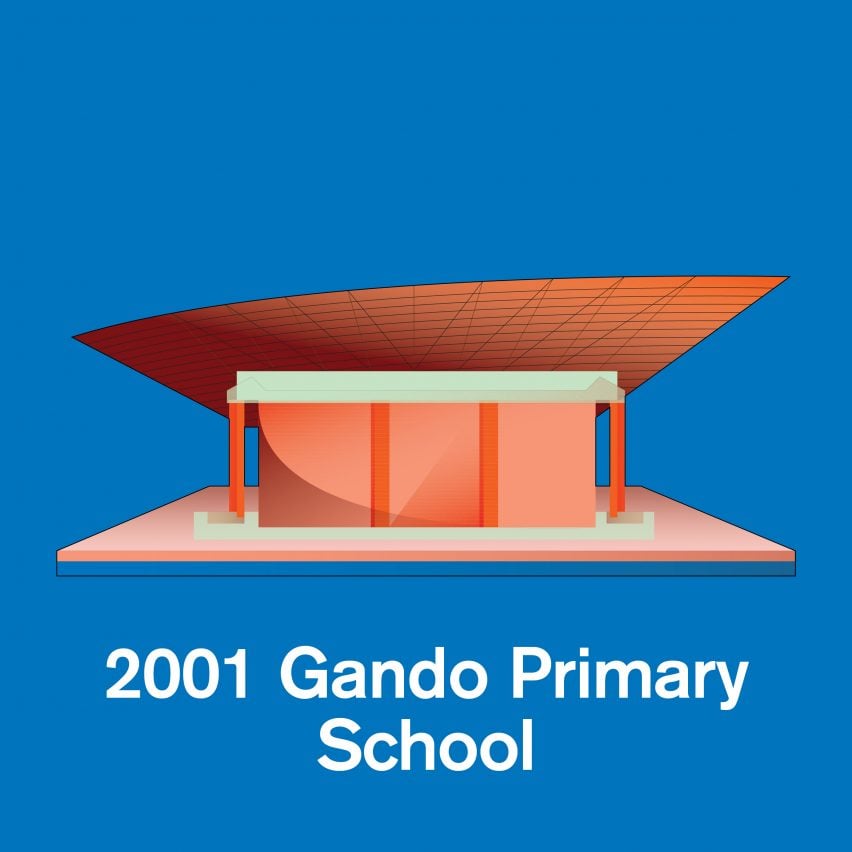
This article is part of Dezeen’s 21st-Century Architecture: 25 Years 25 Buildings series, which looks at the most significant architecture of the 21st century so far. For the series, we have selected the most influential building from each of the first 25 years of the century.
The illustration is by Jack Bedford and photography is by Erik-Jan Ouwerkerk unless otherwise stated.
21st-Century Architecture: 25 Years 25 Buildings
2000: Tate Modern by Herzog & de Meuron
2001: Gando Primary School by Diébédo Francis Kéré
This list will be updated as the series progresses.

